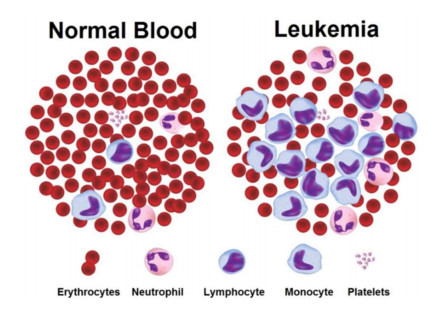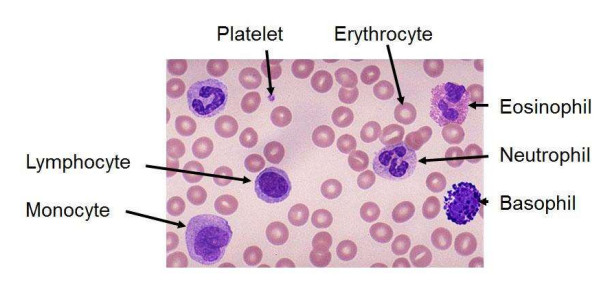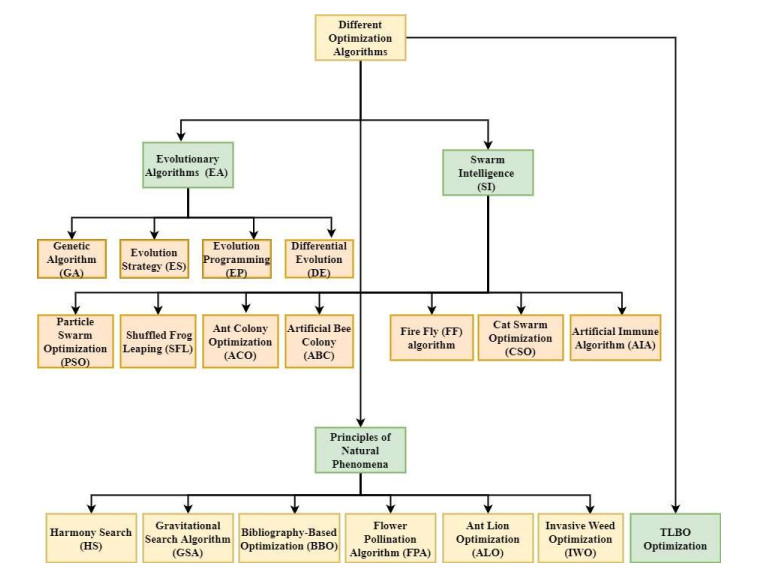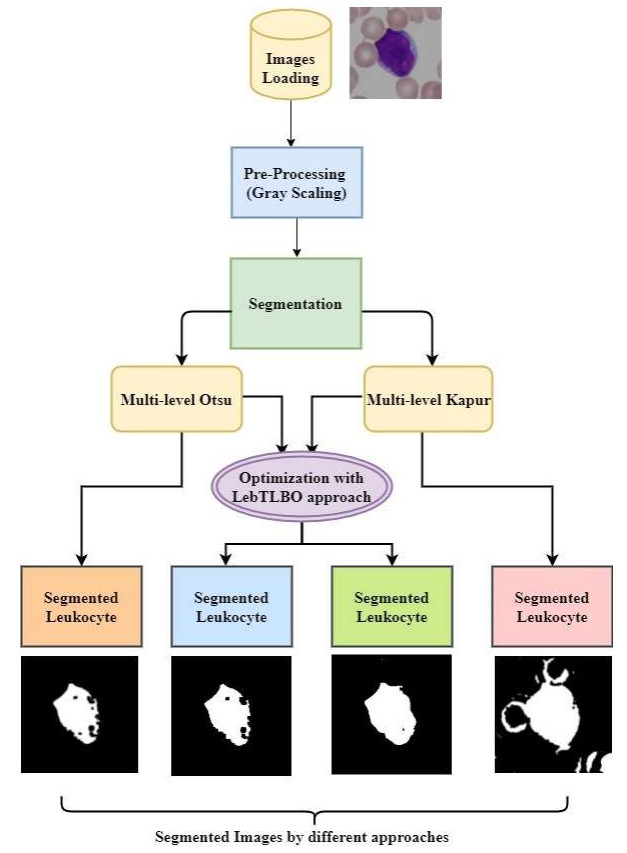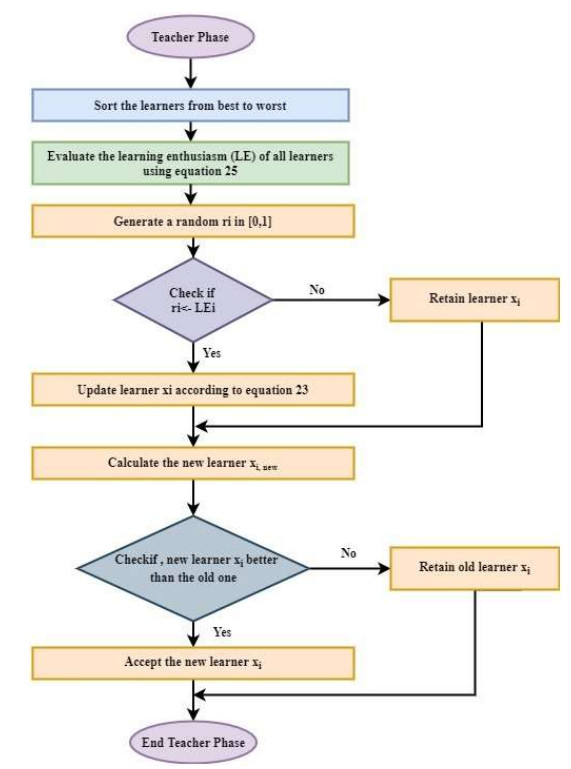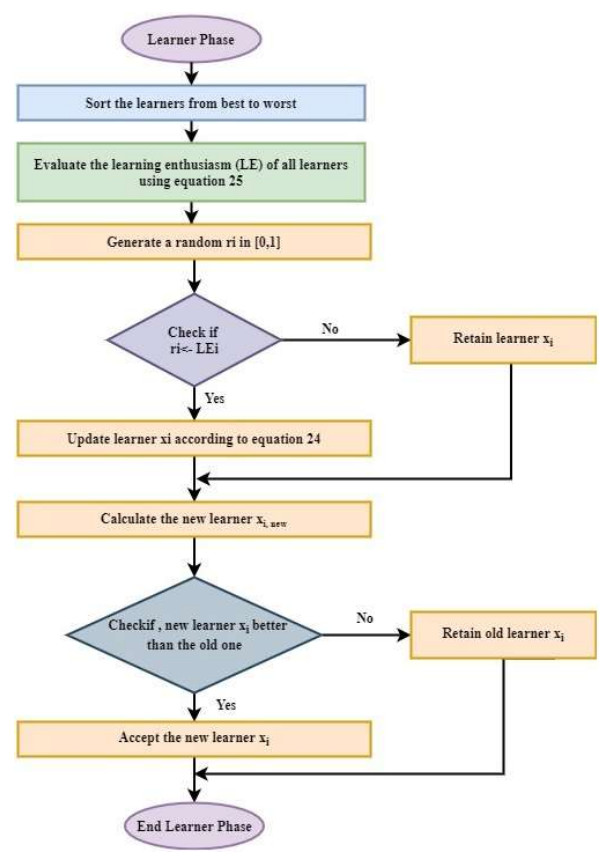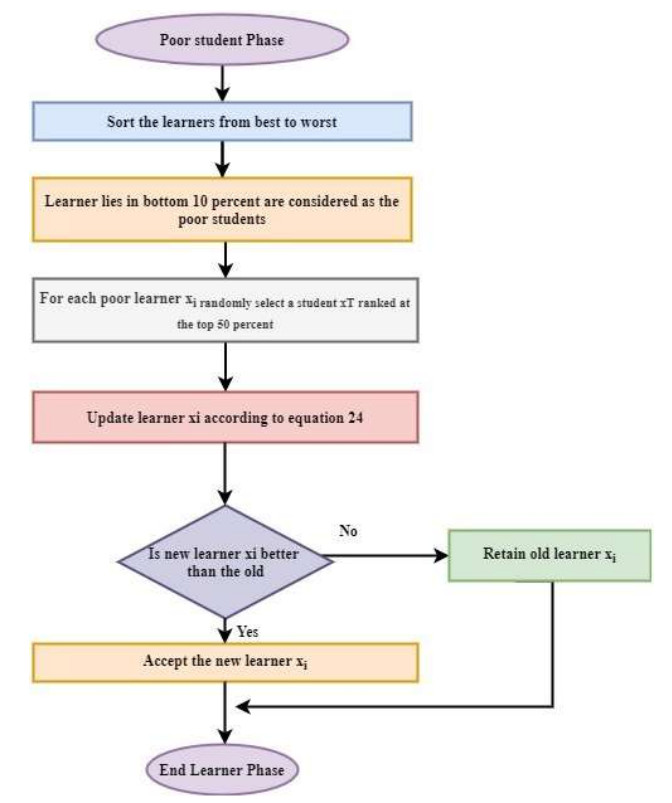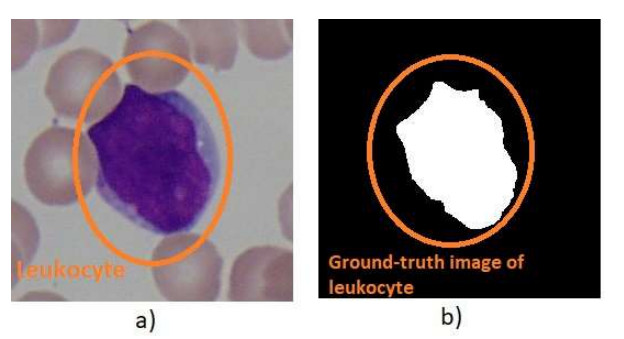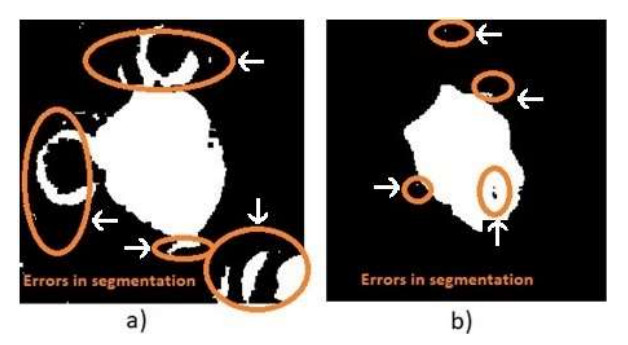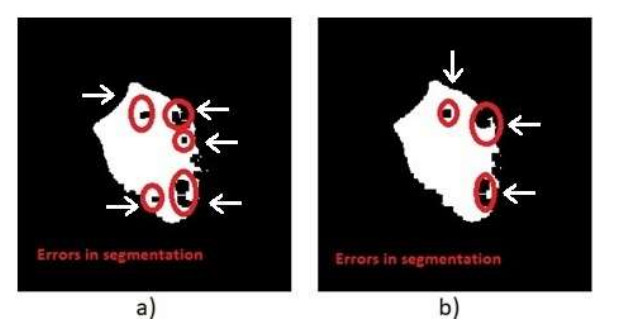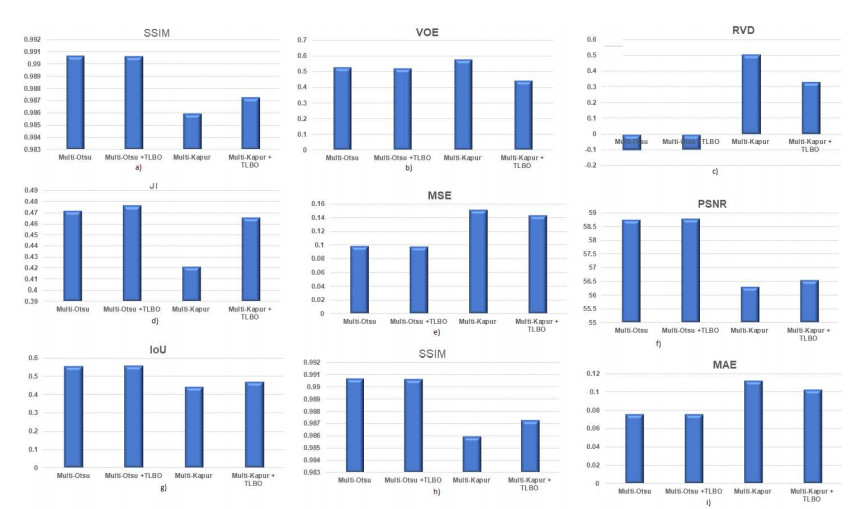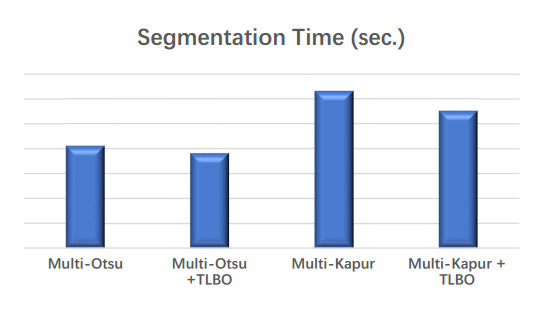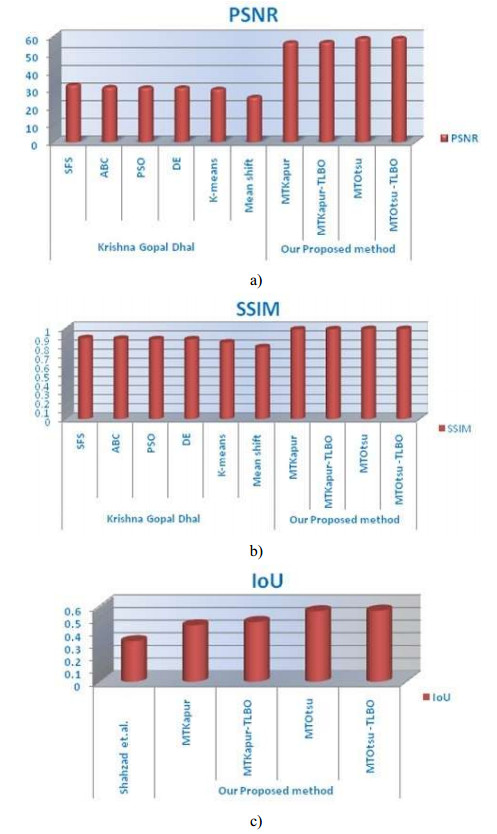1.
Introduction
A piezoelectric-type tensor is a third-order tensor, which plays an important role in physics [1,2,3,4,5,6] and engineering [7,8,9,10,11]. In particular, the largest C-eigenvalue of a piezoelectric tensor and its associated left and right C-eigenvectors play an important role in the piezoelectric effect and the converse piezoelectric effect in the solid crystal [12,13]. Moreover, in the process of manufacturing and developing micro/nano-electromechanical devices, the development of new multifunctional intelligent structures needs consideration piezoelectric effect [14,15]. In order to explore more information about piezoelectric-type tensors, Chen et al. [12] introduced piezoelectric-type tensors and their C-eigentriples.
Definition 1.1. [12,Definition 2.1] Let A=(aijk)∈Rn×n×n be a third-order n-dimensional tensor. If the latter two indices of A are symmetric, i.e., aijk=aikj, where i,j,k∈[n]:={1,2,…,n}, then A is called a piezoelectric-type tensor. When n=3, A is called a piezoelectric tensor.
Definition 1.2. [12,Definition 2.2] Let A=(aijk)∈Rn×n×n be a piezoelectric-type tensor. If there is a real number λ∈R, two vectors x:=(x1,x2,…,xn)⊤∈Rn∖{0} and y:=(y1,y2,…,yn)⊤∈Rn∖{0} such that
where
then λ is called a C-eigenvalue of A, and x and y are its associated left and right C-eigenvectors, respectively. Then, (λ,x,y) is called a C-eigentriple of A and σ(A) is used to denote the spectrum of A, which is a set of all C-eigenvalues of A.
Chen et al. provided the following results for the C-eigenvalues and C-eigenvectors of a piezoelectric-type tensor.
Property 1.1. [12,Theorem 2.3] Let A=(aijk)∈Rn×n×n be a piezoelectric-type tensor.
(a) The C-eigenvalues of A and their associated left and right C-eigenvectors always exist.
(b) Let λ be a C-eigenvalue and (x,y) be its associated left and right C-eigenvectors. Then
Furthermore, (λ,x,−y), (−λ,−x,y) and (−λ,−x,−y) are also C-eigentriples of A.
(c) Let λ∗ be the largest C-eigenvalue of A. Then
As we all know, the largest C-eigenvalue of a piezoelectric-type tensor and its associated C-eigenvectors constitute the best rank-one piezoelectric-type approximation. In view of this, Liang and Yang [16,17] designed two methods to calculate the largest C-eigenvalue of a piezoelectric-type tensor. Later, Zhao and Luo [18] provided a method to calculate all C-eigentriples of a piezoelectric-type tensor by converting the C-eigenvalue problem to the Z-eigenvalue problem of tensors. Moreover, many researchers considered the C-eigenvalue localization problem and provided many C-eigenvalue localization sets [19,20,21,22,23,24]. For instance, Che et al. [25] presented the following Geršgorin-type C-eigenvalue localization set.
Theorem 1.1. [25,Theorem 2.1] Let A=(aijk)∈Rn×n×n be a piezoelectric-type tensor. Then
where
Definition 1.2 and Property 1.1 indicate that a C-eigenvalue λ is real and both λ and −λ are C-eigenvalues, which implies that a C-eigenvalue localization set is always symmetric with respect to the origin. Therefore, the result of Theorem 1.1 is equivalent to σ(A)⊆[−ρΓ,ρΓ], where ρΓ=maxj∈[n]{Rj(A)}.
The remainder of the paper is organized as follows. In Section 2, we construct a new C-eigenvalue localization set and prove that it is sharper than some existing sets. In Section 3, we provide a direct method to find all C-eigentriples when n=3. In Section 4, we reviewed the practical application of C-eigentriples of a piezoelectric-type tensor to the piezoelectric effect and converse piezoelectric effect. In Section 5, we verify the effectiveness of obtained results by numerical examples. In Section 6, we give a summary of this paper.
2.
A new C-eigenvalue localization set
In this section, we provide a new C-eigenvalue localization set and prove that it is sharper than the set in Theorem 1.1. Before that, the following lemma is needed.
Lemma 2.1. [26,pp. 10, Cauchy-Schwarz inequality] Let x=(x1,x2,…,xn)⊤∈Rn and y=(y1,y2,…,yn)⊤∈Rn. Then
Theorem 2.1. Let A=(aijk)∈Rn×n×n be a piezoelectric-type tensor. Then
where
and
Proof. Let (λ,x,y) be a C-eigentriple of A. Let |yt|≥|ys|≥maxk∈[n],k≠t,k≠s{|yk|}. Then 0≤|yt|≤1. From (1.2), we have
Taking the modulus in above equation and using the triangle inequality and Lemma 2.1, we have
i.e.,
which implies that λ∈Kt(A), and
i.e.,
If |ys|=0 in (2.1), we have |λ|≤¯rtt(A), which implies that λ∈ˆΩt(A)⊆Ω(A).
If |ys|>0 in (2.1), then |λ|≤¯rtt(A)+˜rtt(A)≤rt(A), which implies that λ∈Kt(A). Now, suppose that λ∉ˆΩt(A), i.e., |λ|>¯rtt(A). The s-th equation of (1.2) is
which implies that
i.e.,
By multiplying (2.1) and (2.2) and eliminating |ys||yt|>0, we have
which implies that λ∈(˜Ωt,s(A)∩Kt(A))⊆Ω(A), and consequently, σ(A)⊆Ω(A) by the arbitrariness of λ.
Next, we discuss the relationship between the set Ω(A) in Theorem 2.1 and the set Γ(A) in Theorem 1.1.
Theorem 2.2. Let A=(aijk)∈Rn×n×n be a piezoelectric-type tensor. Then
Proof. Let z∈Ω(A). By Theorem 2.1, there exists i,j∈[n] such that z∈ˆΩi(A) or z∈(˜Ωi,j(A)∩Ki(A)).
Case Ⅰ. If z∈ˆΩi(A), then
which implies that z∈Γ(A).
Case Ⅱ. If z∈(˜Ωi,j(A)∩Ki(A)), then z∈˜Ωi,j(A) and z∈Ki(A). If z∈˜Ωi,j(A), then
If ˜rii(A)¯rij(A)=0, then
which implies that z∈Γ(A).
If ˜rii(A)¯rij(A)>0, then
Therefore,
i.e.,
and consequently z∈Γ(A).
When z∈Ki(A), we have
then z∈Γ(A). Hence, Ω(A)⊆Γ(A).
Similarly, we can write the set Ω(A) as [−ρΩ,ρΩ], where
and
Theorem 2.2 indicates that ρΩ≤ρΓ and [−ρΩ,ρΩ]⊆[−ρΓ,ρΓ].
3.
A direct method to calculate all C-eigentriples when n = 3
By the idea to find all M-eigenpairs of a fourth-order tensor in Theorem 7 of [27], we in this section present a direct method to find all C-eigenpair when n=3.
Theorem 3.1. Let A=(aijk)∈Rn×n×n be a piezoelectric-type tensor.Then all C-eigentriples are given as follows:
(a) If a211=a311=a112=a113=0, then (a111,(1,0,0)⊤,(±1,0,0)⊤) and (−a111,(−1,0,0)⊤,(±1,0,0)⊤) are four C-eigentriples of A.
(b) (λ,x,y) is a C-eigentriple of A, where
and
x1, x2 and x3 are the real roots of the following equations:
(c) (λ,x,y) and (−λ,−x,y) are two C-eigentriples of A, where
and
y1, y2 and y3 are the real roots of the following equations:
(d) (λ,x,y) is a C-eigentriple of A, where
and
x1, x2 and x3 and t are the real roots of the following equations:
(e) (λ,x,y) and (−λ,−x,y) are two C-eigentriples of A, where
and
y1, y2, y3 and t are the real roots of the following equations:
(f) (λ,x,y) is a C-eigentriple of A, where
and
u1, u2, v1 and v2 are the real roots of the following equations:
Proof. When n=3, the specific form of (1.1)–(1.4) is
To proceed, we break the arguments into six Cases.
(a) Assume that x=(1,0,0)⊤ and y=(±1,0,0)⊤. Then (3.18)–(3.25) becomes λ=a111 and a211=a311=a112=a113=0.
Assume that x=(−1,0,0)⊤ and y=(±1,0,0)⊤. Then (3.18)–(3.25) becomes λ=−a111 and a211=a311=a112=a113=0.
Hence, if a211=a311=a112=a113=0, then (a111,(1,0,0)⊤,(±1,0,0)⊤) and (−a111,(−1,0,0)⊤,(±1,0,0)⊤) are four C-eigentriples of A.
(b) Assume that y=(±1,0,0)⊤. Then (3.18)–(3.25) becomes
By (3.26) and (3.27), we have (3.1). By (3.26) and (3.28), we have (3.2). Next, solving (3.1), (3.2), (3.30), (3.31) and (3.24), we can obtain x1, x2 and x3, which implies that x=(x1,x2,x3)⊤ and y=(±1,0,0)⊤ are a pair of C-eigenvectors. Furthermore, by (3.29), we can get a C-eigenvalue λ of A.
(c) Assume that x=(1,0,0)⊤. Then (3.18)–(3.25) becomes
By (3.35) and (3.36), we have (3.3). By (3.35) and (3.37), we have (3.4). Next, solving (3.3), (3.4), (3.25), (3.33) and (3.34), we can obtain y1, y2 and y3, which implies that x=(1,0,0)⊤ and y=(y1,y2,y3)⊤ are a pair of C-eigenvectors. Furthermore, by (3.32), we can get a C-eigenvalue λ of A.
Assume that x=(−1,0,0)⊤. Similarly, we have
with its a pair of C-eigenvectors are x=(−1,0,0)⊤ and y=(y1,y2,y3)⊤, which also satisfies (3.3), (3.4), (3.25), (3.33) and (3.34).
(d) Assume that y=(y1,y2,0)⊤, where y2≠0. Then (3.18)–(3.25) becomes
Let t=y1y2. Then the above equations become
By (3.38) and (3.39), we have (3.5). By (3.38) and (3.40), we have (3.6). By (3.4) and (3.42), we have (3.7). Next, solving (3.5)–(3.7), (3.24) and (3.43), we can obtain x1, x2, x3 and t, which leads to its a pair of C-eigenvectors x=(x1,x2,x3)⊤ and y=±(t,1,0)⊤√t2+1. Furthermore, by (3.42), we can get a C-eigenvalue λ of A.
(e) Assume that x=(x1,x2,0)⊤, where x2≠0. Then (3.18)–(3.25) becomes
Let t=x1x2. Then the above equations become
By (3.44) and (3.45), we have (3.9). By (3.47) and (3.48), we have (3.10). By (3.47) and (3.49), we have (3.11). Next, solving (3.9)–(3.11), (3.25) and (3.46), we can obtain y1, y2, y3 and t. And then, by x21+x22=1, we have x2=±1√t2+1. Furthermore, by (3.45), we can get a C-eigenvalue λ of A in (3.8) and its a pair of C-eigenvectors x=±(t,1,0)⊤√t2+1 and y=(y1,y2,y3)⊤.
(f) Assume that x=(x1,x2,x3)⊤ and y=(y1,y2,y3)⊤, where x3≠0 and y3≠0. Let
Then (3.18)–(3.25) becomes
By (3.50) and (3.51), we have (3.14). By (3.50) and (3.52), we have (3.15). By (3.53) and (3.54), we have (3.16). By (3.53) and (3.55), we have (3.17). Next, solving (3.14)–(3.17), we can obtain u1, u2, v1 and v2. Furthermore, by x21+x22+x23=1 and y21+y22+y23=1, we can get x and y in (3.13); by (3.55), we can get a C-eigenvalue λ of A in (3.12).
Remark 3.1. ⅰ) Solving the system of nonlinear equations in (b) of Theorem 3.1, we can choose any three of the first four equations to form a system of linear equations. If the determinant of the coefficient matrix of the system of linear equations is not equal to 0, then the system of linear equations has only zero solution and obviously it is not the solution of the last equation in the system of nonlinear equations, which implies that the system of nonlinear equations in (b) has no solution. If the determinant is equal to 0, then we need to verify that whether this solution satisfies the other two equations.
ⅱ) Solving these system of nonlinear equations in (c)–(f) of Theorem 3.1, we can use the resultant method in algebraic geometry [28] to find their solutions, which has been verified and is feasible in finding all M-eigenpairs of an order 4 dimension 2 tensor in Theorem 7 of [27].
Given two polynomials f(x) and g(x), where
Then the resultant of f(x) and g(x) is represented by Resx(f,g), that is, the determinant of (n+m)×(n+m) is as follows:
where the blank spaces are filled with zeros. It is showed in [28,pp. 78] that over the complex field f(x) and g(x) have a common root if and only if their resultant is zero.
Solving the systems (3.14)–(3.17) with four variables u1, u2, v1 and v2, we can obtain its solutions by successive elimination of variables as follows:
Step 1: Mark the four equations in the systems (3.14)–(3.17) as f1(u1,u2,v1,v2), f2(u1,u2,v1,v2), f3(u1,u2,v1,v2) and f4(u1,u2,v1,v2) in turn, and regard f1, f2, f3 and f4 as functions with u1 as a variable and u2, v1 and v2 as their coefficients. If Resu1(f1,f2)=0, which is a function with u2, v1 and v2 as three variables, then f1 and f2 have a common root. Similarly, Resu1(f1,f3)=0 and Resu1(f1,f4)=0 can be obtained and they are functions with u2, v1 and v2 as three variables.
Step 2: Let
and
and g1, g2 and g3 be regarded as functions with u2 as a variable and v1 and v2 as their coefficients. If Resu2(g1,g2)=0, which is a function with v1 and v2 as two variables, then g1 and g2 have a common root. Similarly, Resu2(g1,g3)=0 can be obtained and it is a function with v1 and v2 as two variables.
Step 3: Let
and h1 and h2 be regarded as functions with v1 as a variable and v2 as a coefficient. If Resv1(h1,h2)=0, which is a function with v2 as a variable, then h1 and h2 have a common root.
Step 4: Solving the function Resv1(h1,h2)=0 with v2 as a variable by Matlab command 'solve', its all real solutions v2 can be obtained.
Step 5: Substituting v2 to h1(v1,v2)=0 and h2(v1,v2)=0 to find all their real solutions v1. And then, substituting v2 and v1 to g1(u2,v1,v2)=0, g2(u2,v1,v2)=0 and g3(u2,v1,v2)=0 to find all their real solutions u2. Furthermore, substituting v2, v1 and u2 to fi(u1,u2,v1,v2)=0 for i∈[4] to find all their real solutions u1. Then, all real roots u1, u2, v1 and v2 of (3.14)–(3.17) are obtained. Finally, by (3.12) and (3.13), we can find all C-eigentriples of A in the Case (f) in Theorem 3.1.
4.
Applications
It is shown in [12,29] that the largest C-eigenvalue λ∗ of a piezoelectric tensor determines the highest piezoelectric coupling constant, and its corresponding C-eigenvector y∗ is the corresponding direction of the stress where this appears. In this section, let's review its physical background, which is shown in [29].
In physics, for non-centrosymmetric materials, we can write the linear piezoelectric equation as
where A=(aijk)∈R3×3×3 is a piezoelectric tensor, T=(Tjk)∈R3×3 is the stress tensor, and p=(pi)∈R3 is the electric change density displacement.
Now, it is worth considering, under what conditions can the maximal piezoelectricity be triggered under a unit uniaxial stress? In this case, the stress tensor T can be rewritten as T=yy⊤ with y⊤y=1. Then, this maximal piezoelectricity problem can be formulated into an optimization model
By a dual norm, \|p\|_2 = \max\limits_{x^{\top}x = 1}x^{\top}p = \max\limits_{x^{\top}x = 1}x\mathcal{A}yy is derived and hence the above optimization model is converted to the following optimization problem
If (x^*, y^*) is an optimal solution of the above optimization problem, then \lambda^* = x^*\mathcal{A}y^*y^* is the largest C-eigenvalue of \mathcal{A} and y^* is the unit uniaxial direction that the maximal piezoelectric effect take place along.
Theorem 4.1. [29,Theorem 7.12] Let \lambda^* be the largest C-eigenvalue, x^* and y^* be the associated C-eigenvectors of a piezoelectric tensor \mathcal{A} .Then, \lambda^* is the maximum value of the 2-norm of the electric polarization under a unit uniaxial stress along the optimal axial direction y^* .
Moreover, the linear equation of the inverse piezoelectric effect is
where S = (S_{jk})\in\mathbb{R}^{3\times3} is the strain tensor and e = (e_i) \in \mathbb{R}^3 is the electric field strength. Next, the following maximization problem is considered:
By \|S\|_2 = \max\limits_{y^{\top}y = 1}y^{\top}Sy = \max\limits_{y^{\top}y = 1}e\mathcal{A}yy , the above maximization problem is rewritten as
If (e^*, y^*) is an optimal solution of the above optimization problem, then \lambda^* = e^*\mathcal{A}y^*y^* is the largest C-eigenvalue of \mathcal{A} , e^* and y^* are its associated C-eigenvectors.
Theorem 4.2. [29,Theorem 7.13] Let \lambda^* be the largest C-eigenvalue and x^* and y^* be its associated C-eigenvectors of a piezoelectric tensor \mathcal{A} .Then, \lambda^* is the largest spectral norm of a strain tensor generated by the converse piezoelectric effect under unit electric field strength \|x^*\| = 1 .
5.
Numerical examples
In this section, numerical examples are given to verify the obtained theoretical results.
Example 1. Consider the eight piezoelectric tensors in [12,Examples 1-8].
(a) The first piezoelectric tensor is \mathcal{A}_{\rm VFeSb} with its nonzero entries
(b) The second piezoelectric tensor \mathcal{A}_{\rm SiO_2} with its nonzero entries
(c) The third piezoelectric tensor \mathcal{A}_{\rm Cr_2AgBiO_8} with its nonzero entries
(d) The fourth piezoelectric tensor \mathcal{A}_{\rm RbTaO_3} with its nonzero entries
(e) The fifth piezoelectric tensor \mathcal{A}_{\rm NaBiS_2} with its nonzero entries
(f) The sixth piezoelectric tensor \mathcal{A}_{\rm LiBiB_2O_5} with its nonzero entries
(g) The seventh piezoelectric tensor \mathcal{A}_{\rm KBi_2F_7} with its nonzero entries
(h) The eigth piezoelectric tensor \mathcal{A}_{\rm BaNiO_3} with its nonzero entries
Ⅰ. Localization for all C-eigenvalues of the above eight piezoelectric tensors.
Now, we use these C-eigenvalues intervals in Theorems 2.1 and 1.1, Theorems 1 and 2 of [20], Theorem 2.1 of [13], Theorems 2.2 and 2.4 of [25], Theorem 2.1 of [24], Theorem 2.1 of [23], Theorem 5 of [19], Theorem 7 of [21], Theorems 2.3–2.5 of [18] and Theorem 2.1 of [22] to locate all Ceigenvalues of the above eight piezoelectric tensors. Numerical results are shown in Table 1. Since these intervals are symmetric about the origin, only their right boundaries are listed in Table 1.
In Table 1, \lambda^{*} is the largest C-eigenvalue of a piezoelectric tensor; \varrho and \varrho_{\min} are respectively the right boundaries of the interval [-\varrho, \varrho] and [-\varrho_{\min}, \varrho_{\min}] obtained by Theorems 1 and 2 in [20]; \widetilde{\varrho}_{\min} are respectively the right boundary of the interval [-\widetilde{\varrho}_{\min}, \widetilde{\varrho}_{\min}] obtained by Theorem 2.1 of [13]; \rho_{\mathcal{L}} and \rho_{\mathcal{M}} are respectively the right boundaries of the intervals [-\rho_{\mathcal{L}}, \rho_{\mathcal{L}}] and [-\rho_{\mathcal{M}}, \rho_{\mathcal{M}}] obtained by 2.2 and 2.4 in [25]; \rho_{\Upsilon} is the right boundary of the interval [-\rho_{\Upsilon}, \rho_{\Upsilon}] obtained by Theorem 2.1 of [24]; \rho_{\gamma} is the right boundary of the interval [-\rho_{\gamma}, \rho_{\gamma}] obtained by Theorem 2.1 of [23]; \rho_{\Omega^{S}} is the right boundary of the interval [-\rho_{\Omega^{S}}, \rho_{\Omega^{S}}] obtained by Theorem 5 of [19]; \rho_{C} is the right boundary of the interval [-\rho_{C}, \rho_{C}] obtained by Theorem 7 of [21]; \rho_{G} , \rho_{B} and \rho_{\min} are respectively the right boundaries of the intervals [-\rho_{G}, \rho_{G}] , [-\rho_{B}, \rho_{B}] and [-\rho_{\min}, \rho_{\min}] obtained by Theorems 2.3–2.5 in [18]; \rho_{\Psi} is the right boundary of the interval [-\rho_{\Psi}, \rho_{\Psi}] obtained by Theorem 2.1 of [22]; \rho_{\Gamma} is the right boundary of the interval [-\rho_{\Gamma}, \rho_{\Gamma}] obtained by Theorem 1.1; \rho_{\Omega} is the right boundary of the interval [-\rho_{\Omega}, \rho_{\Omega}] obtained by Theorem 2.1.
From Table 1, it can be seen that:
ⅰ) \rho_{\Omega} is smaller than \varrho , \varrho_{\min} , \widetilde{\varrho}_{\min} , \rho_{\Gamma} , \rho_{\mathcal{L}} , \rho_{\mathcal{M}} , \rho_{\Upsilon} , \rho_{\gamma} for the eight piezoelectric tensors.
ⅱ) \rho_{\Omega}\leq \rho_{\Omega^S} , \rho_{\Omega}\leq \rho_B for the eight piezoelectric tensors.
ⅲ) For some tensors, \rho_{\Omega} is smaller than \rho_C , \rho_G , \rho_{\min} and \rho_{\Psi} .For the other tensors, \rho_{\Omega} is bigger than or equal to \rho_{C} , \rho_{G} , \rho_{\min} and \rho_{\Psi} .For examples, for \mathcal{A}_{\rm VFeSb} , \rho_{\Omega} < \rho_C , \rho_\Omega < \rho_G , \rho_\Omega < \rho_{\min} and \rho_\Omega < \rho_{\Psi} ; For \mathcal{A}_{\rm SiO_2} , \rho_{\Omega} > \rho_C , \rho_\Omega > \rho_{\min} and \rho_\Omega > \rho_{\Psi} ; For \mathcal{A}_{\rm BaNiO_3} , \rho_{\Omega} > \rho_G .
Ⅱ. Calculation for all C-eigentriples of the seventh piezoelectric tensor \mathcal{A}_{\rm KBi_2F_7} by Theorem 3.1.
All C-eigentriples of \mathcal{A}_{\rm KBi_2F_7} are obtained by Theorem 3.1 and are showen in Table 2. And the calculation process is shown in Appendix.
6.
Conclusions
Let \mathcal{A}\in \mathbb{R}^{n\times n\times n} be a piezoelectric-type tensor. In this paper, we in Theorem 2.1 constructed a C-eigenvalue interval \Omega(\mathcal{A}) to locate all C-eigenvalues of \mathcal{A} and proved that it is tighter than that in [25,Theorem 2.1]. Subsequently, we in Theorem 3.1 provided a direct method to find all C-eigentriples of \mathcal{A} when n = 3 . Although the method in Theorem 3.1 is divided into six Cases, it is indeed a little complicated, but it can be seen from Example 1 that this method is feasible.
Acknowledgments
The authors are very grateful to the five anonymous referees for their insightful comments and constructive suggestions, which considerably improve our manuscript. Caili Sang's work is supported by Science and Technology Plan Project of Guizhou Province (Grant No. QKHJC-ZK[2021]YB013). Jianxing Zhao's work is supported by Science and Technology Plan Project of Guizhou Province (Grant No. QKHJC-ZK[2022]YB215).
Conflict of interest
The author declares there is no confict of interest.
Appendix
The following is the calculation process for all C-eigentriples of \mathcal{A}_{\rm KBi_2F_7} by Theorem 3.1.
(a) Because a_{211}\neq 0 , Case (a) in Theorem 3.1 does not holds.
(b) The system in Case (b) of Theorem 3.1 is
The three Eqs (A.1)–(A.3) yield a linear system of equation Ax = 0 , where x = (x_{1}, x_{2}, x_{3})^{\top} and
From \det(A) = 179.0074\neq 0 , the solution of Ax = 0 is x = (x_1, x_2, x_3)^\top = (0, 0, 0)^\top , which contradicts with x_1^2+x_2^2+x_3^2 = 1 . Hence, the system in Case (b) of Theorem 3.1 has no solution.
(c) The system in Case (c) of Theorem 3.1 is
We now regard f_i(y_1, y_2, y_3) , i\in [5] as a function with y_1 as a variable and y_2 and y_3 as two coefficients and obtain their resultants as follows:
Let g_1(y_2, y_3): = {\text{Res}}_{y_1}(f_1, f_2) , g_2(y_2, y_3): = {\text{Res}}_{y_1}(f_1, f_3) , and its resultant
Then y_3 = 0 . Substituting y_3 = 0 into g_1 and g_2 , we have
Let g_1(y_2, y_3) = 0 and g_2(y_2, y_3) = 0 . We have y_2 = 0 . Substituting y_2 = 0 and y_3 = 0 into f_1 , we have f_1(y_1, y_2, y_3) = 2.59187y_1^2 . Solving f_1(y_1, y_2, y_3) = 0 , we have y_1 = 0 . However, y_1 = y_2 = y_3 = 0 is not solution of y_1^2+y_2^2+y_3^2 = 1 . Hence, the system in Case (c) of Theorem 3.1 has no solution.
(d) Similar to solution for Case (c), the system in Case (d) of Theorem 3.1 has no solution.
(e) Similar to solution for Case (c), the system in Case (e) of Theorem 3.1 has no solution.
(f) The system in Case (f) of Theorem 3.1 is
We now regard f_i(u_1, u_2, v_1, v_2) , i\in [4] as a function with u_1 as a variable and u_2 , v_1 and v_2 as three coefficients and obtain their resultants as follows:
and
Let
Then their resultants are
and
Let
Their results are
Next, we obtain the solution of the system (f) by the following steps:
Step 1. Solving {\text{Res}}_{v_1}(h_1, h_2) = 0 , we have
Step 2. Substituting v_2 = -0.85035 into h_1(v_1, v_2) , and letting h_1(v_1, v_2) = 0 , it all real roots are v_1 = -0.43450 or v_1 = 4.25751 . Substituting v_2 = -0.85035 into h_2(v_1, v_2) , and letting h_2(v_1, v_2) = 0 , it all real roots are v_1 = -0.48184 , -0.17296 , 0.0000000000038876, or 5.04918. It is easy to see that h_1(v_1, v_2) = 0 and h_2(v_1, v_2) = 0 have no common solution, which implies that v_2 = -0.85035 is not a solution of the system (f).
Step 3. Substituting v_2 = 0.22179 into h_1(v_1, v_2) , and letting h_1(v_1, v_2) = 0 , it all real roots are v_1 = -0.43450 or 4.25751. substituting v_2 = 0.22179 into h_2(v_1, v_2) , and letting h_2(v_1, v_2) = 0 , it all real roots are v_1 = -0.24034 or 4.25751. It is easy to see that v_1 = 4.25751 is a common solution of h_1(v_1, v_2) = 0 and h_2(v_1, v_2) = 0 .
Step 4. Substituting v_2 = 0.22179 and v_1 = 4.25751 into g_1(u_2, v_1, v_2) , g_2(u_2, v_1, v_2) and g_3(u_2, v_1, v_2) , and letting g_1(u_2, v_1, v_2) = 0 , its all real roots are u_2 = 1.76393 ; letting g_2(u_2, v_1, v_2) = 0 , its all real roots are u_2 = 1.76393 ; letting g_3(u_2, v_1, v_2) = 0 , its all real roots are u_2 = 1.76393 . Hence, the common solution of g_1(u_2, v_1, v_2) = 0 , g_2(u_2, v_1, v_2) = 0 and g_3(u_2, v_1, v_2) = 0 is u_2 = 1.76393 .
Step 5. Substituting v_2 = 0.22179 , v_1 = 4.25751 and u_2 = 1.76393 into f_1 , and letting f_1(u_1, u_2, v_1, v_2) = 0 , we can get its all real roots u_1 = 8.16186 .
Step 6. By v_2 = 0.22179 , v_1 = 4.25751 , u_2 = 1.76393 , u_1 = 8.16186 , (3.2) and (3.3), we can get the corresponding C-eigentriples as follows:
\bullet \lambda = 13.50214 and its C-eigenvectors are
\bullet \lambda = -13.50214 and its C-eigenvectors are
Step 7. For other values of v_2 , such as, -7.79725 , -1.78254 , -11.53378 , -0.75907 , -0.70532 , 0.47100, we can also obtain their corresponding C-eigentriples by using the method similar to Steps 3–6.
Finally, we find all C-eigentriples, which is listed in Table 2.









 DownLoad:
DownLoad:


